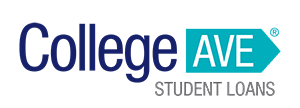If you gulp every time you look at your student loan balance, you’re not alone. According to our 2021 Student Loan & Refinancing Statistics report, the average loan balance for college graduates is $29,650, with an average monthly payment of $393.
Making that payment every month can be very difficult, especially in the early stages of your career when you’re earning a lower salary. Such a high payment can stretch your budget to the max, causing you to struggle to afford essentials like rent and groceries.
If you’re having trouble making ends meet — or simply want to free up more money in your budget for your other priorities — there are ways to lower student loan payments and take advantage of your extra cash.
Managing student loans and other expenses
The National Association of Colleges and Employers reported that the average starting salary for new college graduates in 2020 was $55,260. That may seem like a healthy income, but you can quickly run out of cash.
If your income is $55,260, your take-home pay after taxes will be approximately $45,000, or $4,090 per month.
According to researchers, the average single person spends the following amounts every month on basic essential expenses:
| Average Monthly Cost of Essentials | |
| Food | $394 |
| Housing | $1,219 |
| Car payment | $391 |
| Car insurance | $124 |
| Gas | $164 |
| Healthcare | $143 |
| Utilities (electric, water, trash, internet) | $240 |
| Student loans | $393 |
| Total Spent Per Month | $3,068 |
Add in your student loan payment — $393 — and your necessary expenses add up to $3,068. That leaves you with about $1,000 for everything else, including entertainment, saving for a rainy day, clothing, retirement contributions, toiletries, or household supplies. The cost of your student loans and basic living expenses don’t leave a lot of room to save for your other goals, like buying a home, traveling, or starting a family.
If you have other debt, live in an area with a high cost of living, or have dependents, your budget could be even tighter.
How student loan refinancing can lower your payments
If you’re barely making ends meet or want to find extra money to put toward your other priorities, you may be wondering how to lower your student loan payments. One excellent solution is student loan refinancing.
You can refinance both federal and private student loans. To do so, you apply for a loan from a private lender that specializes in student loan refinancing. You take out a loan for the amount of your combined education debt and use it to pay off your current loans.
You are not required to refinance all of your loans — for example, you can choose to include only the high-interest private loans while keeping your federal loans as-is.
With refinancing, you will have just one loan payment going forward rather than several, making it easy to stay on track. But, student loan refinancing can give you a significantly lower monthly payment. You can reduce your payment in the following ways:
1. You qualify for a lower interest rate
The interest rates on your loans have a big impact on your total repayment cost and the minimum required payment. If you refinance your loans and qualify for a lower rate, you could reduce your payment.
While The Institute for College Access & Success reported that some loans had interest rates as high as 14.24%, the average interest rate for all loans is 5.8%. But if you refinance, you could get approved for a much lower rate.
Consider this example: If you had the average amount of student loan debt — $29,650 — at 5.8% interest and a 10-year repayment term, your monthly payment would be $326. By the end of your loan’s term, you would pay over $9,400 in interest charges.
If you refinanced and qualified for a 10-year loan at 3.00% interest, your monthly payment would drop to $286 — a savings of about $40 every month. And you’d pay just $4,706 in interest charges; by taking advantage of student loan refinancing, you’d save $4,788.

Free eBook: How to Conquer Student Loans
Free eBook: How to Conquer Student Loans

2. You adjust your repayment term
Another way to lower your monthly payment through student loan refinancing is to adjust your loan term. The default repayment term on federal loans is 10 years. But refinancing lenders offer terms as long as 20 years.
Let’s say you had the same original loan as in the first example. If you refinanced your loans and extended your repayment term to 15 years, you could qualify for a rate of 5.00%. Your monthly payment would drop to $234 — a savings of $92 each month. You would pay more in interest due to the larger loan term, but you’d have $92 in extra cash each month for your more immediate needs.
Benefits of lowering your student loan payments
By refinancing your loans, you can free up some money in your budget each month. Even if your monthly savings are relatively modest compared to your overall expenses, the long-term results can be substantial.
In fact, lowering your payments can benefit you in three powerful ways:
1. You can build an emergency fund
Experts recommend saving three to six months’ worth of expenses in an emergency fund. As a recent college graduate, that may feel impossible. But by lowering your student loan payments, you can have more money each month to put toward your emergency fund goal. You could build a financial cushion that you can use when the unexpected happens, like a car repair or medical bill.
Consider the below examples. If you only set aside the money you saved by refinancing each month — either by extending your term or keeping your current loan term with a lower rate — here’s how much you could save in an emergency fund:
| Refinanced with 10-Year Term* | Refinanced with 15-Year Term* | |
| Monthly Amount Contributed to Savings Account | $40 | $92 |
| Total Saved After 5 Years | $2,430.75 | $5,590.73 |
| Total Saved After 10 years | $4,923.02 | $11,322.96 |
| *Assumes money is deposited into a high-yield savings account with a 0.50% annual percentage yield with interest compounded monthly |
2. You can contribute to a retirement account
If you’re like most recent graduates, retirement is the last thing on your mind. But the earlier you start saving for retirement, the better off you’ll be. By contributing some money now to a retirement plan, your money will have more time to grow.
If you contribute the money you save through student loan refinancing into a retirement account like an IRA or 401(k), here’s how much you could have in 10 years based on different stock market performances:
| Refinanced With 10-Year Term | Refinanced With 15-Year Term | |
| Monthly Contribution | $40 | $92 |
| Average annual return of 6% (Conservative) | $6,555 | $15,076 |
| Average annual return of 8% (Moderate) | $7,317 | $16,831 |
| Average annual return of 12% (Aggressive) | $9,201 | $21,163 |
3. You can save for a down payment
According to Rocket Mortgage, the average homebuyer has a down payment of 6% of the house’s value. However, borrowers with good credit and reliable income can qualify for conventional mortgages with as little as 3% down. If you were to buy a $300,000 home, that means you’d need just $9,000 for a down payment.
By refinancing your loans, you’d have more money every month to set aside for a down payment, making your dream of homeownership come true sooner.
4. You can plan your wedding
Weddings are huge milestones, but they can be expensive. The Knot reported that the average cost of a wedding in 2020 was $19,000. If you were to split the cost with your future partner, you’d have to come up with $9,500 to cover your half of the cost. If you refinance and qualify for a lower interest rate or extend your repayment term, you can reach that goal more quickly.
5. You can start a business
If you want to become an entrepreneur, you’ll need to save some money to make that happen. It costs $2,000 to $5,000 to get a microbusiness — a business with fewer than 10 employees — off the ground. As a recent college graduate, it can be difficult to get that much cash together. But refinancing and getting a lower payment can give you the breathing room in your budget that you need to start a business.
How to calculate refinance savings
How much you can save each month is dependent on a range of factors. To calculate refinancing savings, consider the following:
- Interest rate: Your current interest rate and the refinancing rate you qualify for are the biggest factors affecting your monthly and total savings. If you have high-interest student loans and have good credit, you could qualify for a significantly lower rate of interest, reducing your monthly payment.
- Interest rate type: When you refinance your loans, you can decide between a variable interest rate and a fixed interest rate. With a fixed interest rate, you’ll know exactly what your monthly payment will be for the duration of your repayment term. With a variable rate, you may get a lower rate at first than you’d get with a fixed-rate loan. However, the rate can change over time, and your monthly payment will also change along with it.
- Repayment term: The longer your repayment term, the lower your monthly payment will be. However, you should keep in mind that you may pay more in overall interest charges with a longer term, since your loan will have more time to accrue interest. But you may decide that the drawback is worth it to get more money in your monthly budget.
You can use Purefy’s Student Loan Refinance Calculator to easily calculate how much you’d save by consolidating your loans.
See How Much You Can Save
View Details
Collapse
Step 3: See How Much You Can Save
$15,310
Lifetime Interest
Savings
$1,018
New Monthly
Payment
$128
Monthly
Savings
| Current Loan | New Loan | Savings | |
|---|---|---|---|
| Rate | 6.7% | 4.2% | 2.5% |
| Lifetime Interest | $37,520 | $22,210 | $15,310 |
| Monthly Payment | $1,146 | $1,018 | $128 |
Like what you see? Check your actual prequalified rates from the industry’s top lenders in just 2 minutes or less.
Deciding between getting a lower monthly payment vs. saving money overall
When you refinance your student loans, you have to decide between two main goals:
- Saving money on overall repayment
- Reducing your monthly payment
But how can you choose between those goals? To figure out which result is best for your needs, ask yourself the following four questions.
1. What are your priorities?
First, think about what your financial goals are for the future. If you want to buy a home, get married, or have children within the next few years, it may make more sense to refinance to get a lower monthly payment so you can set aside money for those goals now.
If your goal is more long-term, such as retiring early, refinancing and opting for a shorter loan term may make more sense. Borrowers who select shorter loan terms often get the lowest interest rates, so less interest will accrue. You’ll pay off the loan faster and save thousands over the life of the loan. With this strategy, you’ll be debt-free sooner.
2. How much breathing room do you have in your budget?
If money is very tight and you only make a little more than you spend, refinancing to get a lower payment can be a smart move. It will relieve some of the pressure on you and give you some wiggle room in your budget.
If your budget is more comfortable and you have lots of extra cash, refinancing for a shorter term and lower interest rate is a good idea. You can use that extra cash to pay off the loans more aggressively.
3. How comfortable are you carrying debt?
For some people, debt is stress-inducing. If you’re the kind of person that gets anxious carrying debt and stays awake at night worrying about how to pay off your student loans, reducing your monthly payment may not be the best approach. Refinancing to get a lower payment will cause you to be in debt longer, so you’ll have to deal with that stress for even more time. Instead, consider refinancing and making extra payments to get rid of the debt as quickly as you can.
If you have student loans with relatively low interest rates, you may not be so worried about your debt. If they aren’t a major source of stress, refinancing and lowering your payment can free up cash so you can travel with friends, get a nicer apartment, or launch a business. Dealing with your loans for a longer term may be worth it to enjoy yourself more right now.
4. Do you have other forms of debt?
One of the most important factors in considering your goals is whether you have other debt. Depending on the type of debt you have, interest rates can be much higher than the typical rates for student loans.
According to the Federal Reserve, the average interest rate for credit cards was 16.30% as of May 2021, the last available data. That’s significantly higher than the average rate for student loan debt.
If you have credit card balances or other high-interest debt, it’s likely wiser to refinance your loans and extend your loan term. You’ll free up money in your budget to put toward the more expensive debt, which can help you save money.
By contrast, refinancing to get the lowest possible rate may be a good option if your student loans are your only debt or if you only have low-interest debt, like a home loan.
The 2 Best Companies to Refinance Student Loans
Our Top-Rated Picks for 2024 Offer Low Rates and No Fees

3 other ways to lower your student loan payments
While student loan refinancing is an effective way to reduce your monthly student loan payments, it isn’t the only strategy. Depending on your situation, you may be able to lower your payments with the following options:
Direct Consolidation Loan
If you have federal student loans, you can get a lower payment by consolidating your loans through the federal Direct Consolidation Loan program. Federal loan consolidation won’t lower your interest rates, but you can lengthen your repayment term up to 30 years, slashing your monthly payments. Plus, your loans will be all combined together, so you’ll only have one monthly payment to make every month.
Income-Driven Repayment (IDR) Plan
Only available to federal loan borrowers, another option is to apply for an IDR plan. If you are eligible for an IDR plan, your loan servicer will extend your repayment term, and your monthly payment will be recalculated based on your discretionary income. Depending on your income and family size, you could dramatically reduce your payments. Some people even qualify for $0 payments and don’t have to pay anything but stay current on their loans.
If you’re on an IDR plan and still have a balance after 20 to 25 years — the length of time depends on which IDR plan you’re on — the government will forgive the remaining amount.
Forbearance/Deferment
If you’re sick, unemployed, or have a full-time job that pays very low wages, you may be eligible for a forbearance or deferment. With federal forbearance or deferment programs, you can postpone your payments for up to three years. And, if you have subsidized loans, the government will even cover the interest that accrues during your deferment period.
If you have private student loans, you aren’t eligible for federal deferment or forbearance. However, some private lenders and refinancing lenders offer their own financial hardship programs. Borrowers struggling with unemployment or illnesses may qualify for reduced payments, or the lender may temporarily postpone payments to give the borrower time to recover. If you’re struggling with your loans, contact your loan servicer right away to discuss your options.
How to get the best refinancing deals
Now that you know all of the ways to lower student loans payments, you can choose a repayment plan that works best for you.
Whether you want to aggressively pay off your loans or reduce your payments as much as you can, here is what you need to know to get the best deal on student loan refinancing:
Improve your credit
Regardless of your ultimate refinancing goal, most lenders require borrowers to have a credit score of 650 or higher. But the better your score, the lower the interest rate will be on the loan. Before shopping for a refinancing loan, try to boost your credit as much as possible.
Check your credit report for errors and make all of your payments on time. Try to limit new credit inquiries until after you refinance your loans to ensure your score is as high as possible when you apply.
Reduce your debt
Besides your credit score, lenders will also look at your debt-to-income ratio (DTI), or how much of your monthly income goes toward debt. If you have a high DTI, lenders will see you as a riskier loan candidate. If you qualify for a loan, you may get stuck with a higher interest rate.
If you have any forms of debt with relatively small balances, such as credit cards, pay off the balances as quickly as you can. By eliminating that debt, you can improve your DTI and become a more appealing borrower.
Add a cosigner to your application
If you have less-than-perfect credit or have other forms of debt, another way to get a better deal on student loan refinancing is to add cosigner to your application. If your cosigner has excellent credit and a steady income, they can help you get a much better interest rate than you’d get on your own.
Compare offers from multiple lenders
Rates and terms can vary widely from lender to lender. Before submitting a loan application, get rate quotes from multiple refinancing lenders to find the best offer. With Purefy, you can compare rates from top student loan refinancing lenders by filling out one simple form. And, getting a quote doesn’t impact your credit score.
The bottom line
There are several ways to lower student loan payments, though student loan refinancing is often the most effective. However, make sure you have a plan in place on how to use your savings before refinancing. Otherwise, the money you save could just be frittered away, and you won’t improve your finances at all.
Instead, calculate your refinancing savings and have a job for the difference in monthly payments. You can set up automatic contributions to a retirement plan or savings account so the money is set aside before you can spend it, ensuring your money works harder for you.




















